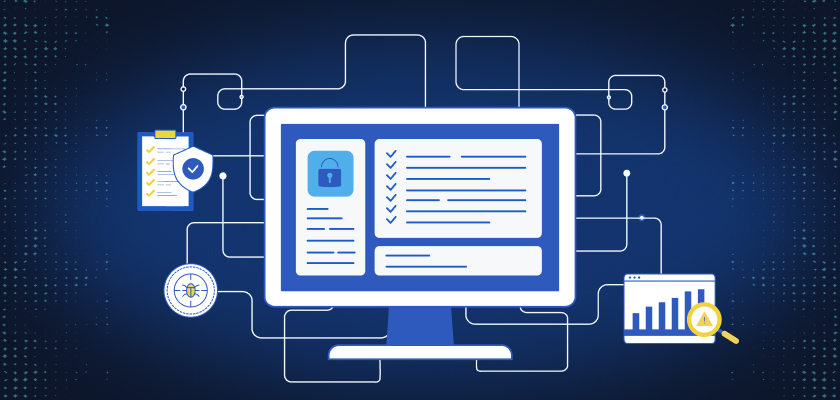
NIST compliance is essential for organizations that manage sensitive data and IT systems, offering a robust framework to enhance cybersecurity and meet regulatory requirements.
This checklist outlines the essential steps to achieve compliance with frameworks such as NIST CSF, NIST 800-53, and NIST 800-171. Following these guidelines ensures your organization maintains a strong security posture, reduces risks, and builds trust with stakeholders.
What Is NIST Compliance?
NIST compliance refers to the adherence to a set of guidelines, controls, and best practices developed by the National Institute of Standards and Technology (NIST) to protect sensitive information and reduce cybersecurity risks. These guidelines are tailored to help organizations of all sizes and sectors establish robust security frameworks capable of addressing modern threats.
At its core, NIST compliance is about fostering a proactive and structured approach to cybersecurity. By implementing NIST’s recommended controls, organizations can safeguard critical systems, maintain data integrity, and ensure availability. This is particularly important for businesses operating in highly regulated industries, such as healthcare, finance, and government contracting, where securing sensitive information is both a business necessity and a legal requirement.
For example, frameworks like NIST 800-53 focus on implementing specific security controls for federal agencies and contractors, while NIST CSF offers a more flexible, risk-based framework suitable for businesses across all industries. Similarly, NIST 800-171 provides detailed guidance for protecting Controlled Unclassified Information (CUI) in non-federal systems. Whether mandatory for compliance or voluntarily adopted, NIST standards provide organizations with a proven roadmap for managing cybersecurity risks.
Why Achieve NIST Compliance?
Achieving NIST compliance is more than just meeting regulatory obligations—it’s about proactively building a foundation for cybersecurity resilience and operational trust. In today’s threat landscape, where data breaches and cyberattacks are increasingly common, adhering to NIST standards provides organizations with the tools to mitigate risks, ensure compliance, and gain a competitive edge. Achieving NIST compliance offers numerous benefits for organizations, including:
- Data Security: Protect sensitive information from cyber threats.
- Compliance Readiness: Meet regulatory requirements such as CMMC, HIPAA, and PCI-DSS.
- Reduced Cyber Risks: Minimize risks related to data breaches and vulnerabilities.
- Audit Preparedness: Ensure documentation and processes are ready for compliance audits.
- Client Trust: Build confidence among clients by demonstrating adherence to cybersecurity standards.
NIST Compliance Checklist: Essential Steps
This checklist outlines the critical steps to achieve and maintain NIST compliance:
| Key Step | Description |
| Establish Security Policies & Procedures | Develop and regularly update policies for data protection, access control, and incident management. |
| Conduct a Risk Assessment (RA) | Identify potential threats, evaluate their impact, and document mitigation strategies. |
| Implement Access Control (AC) | Enforce role-based access control (RBAC) and multifactor authentication (MFA). Conduct access audits. |
| Conduct Security Awareness Training (AT) | Train employees on cybersecurity best practices. Conduct phishing simulations and track completion. |
| Apply Configuration Management (CM) | Standardize configurations, apply patches, and conduct regular vulnerability scans. |
| Establish Incident Response (IR) | Develop and test an incident response plan (IRP). Conduct simulations to evaluate readiness. |
| Enable Audit Logging & Monitoring (AU) | Enable system logging, monitor suspicious activities, and retain logs for audits. |
| Perform System Backups & Recovery (CP) | Schedule secure backups, store them off-site, and test disaster recovery plans regularly. |
| Secure Communications (SC) | Encrypt data-in-transit and data-at-rest. Use secure VPNs for remote access. |
| Continuous Monitoring (DE) | Deploy automated tools like SIEMs and perform regular scans to identify vulnerabilities. |
NIST Compliance Checklist
Download the NIST Compliance Checklist for quick reference.
How to Maintain NIST Compliance
Compliance is an ongoing process. To stay compliant, organizations should:
- Schedule Regular Audits: Perform internal and external audits annually or after significant system changes.
- Update Security Policies: Review policies regularly to ensure alignment with evolving standards and threats.
- Train Employees Continuously: Provide ongoing training to address emerging cyber threats and maintain employee awareness.
- Test and Improve Incident Response Plans: Conduct tabletop exercises and refine response plans based on outcomes.
- Monitor Security Metrics: Track key compliance and incident response metrics to identify areas for improvement.
Achieve Cybersecurity Excellence with NIST Compliance
By following this NIST Compliance Checklist, organizations can effectively reduce risks, meet regulatory standards, and strengthen their cybersecurity frameworks. Regular assessments and updates are essential for maintaining compliance and building a resilient security posture.
Step-by-Step Guide to NIST Compliance for Service Providers
Simplify NIST compliance with a step-by-step roadmap, actionable best practices, and tools to help your MSP or MSSP scale services efficiently and securely.
Frequently Asked Questions About NIST Compliance
NIST compliance involves adhering to cybersecurity controls to reduce risks and protect sensitive data.
Government contractors, MSPs, MSSPs, and businesses handling sensitive information.
Developing policies, conducting risk assessments, and implementing access controls.
Annually or after significant changes to systems or processes.
No, but it is widely adopted globally as a best practice for cybersecurity management.